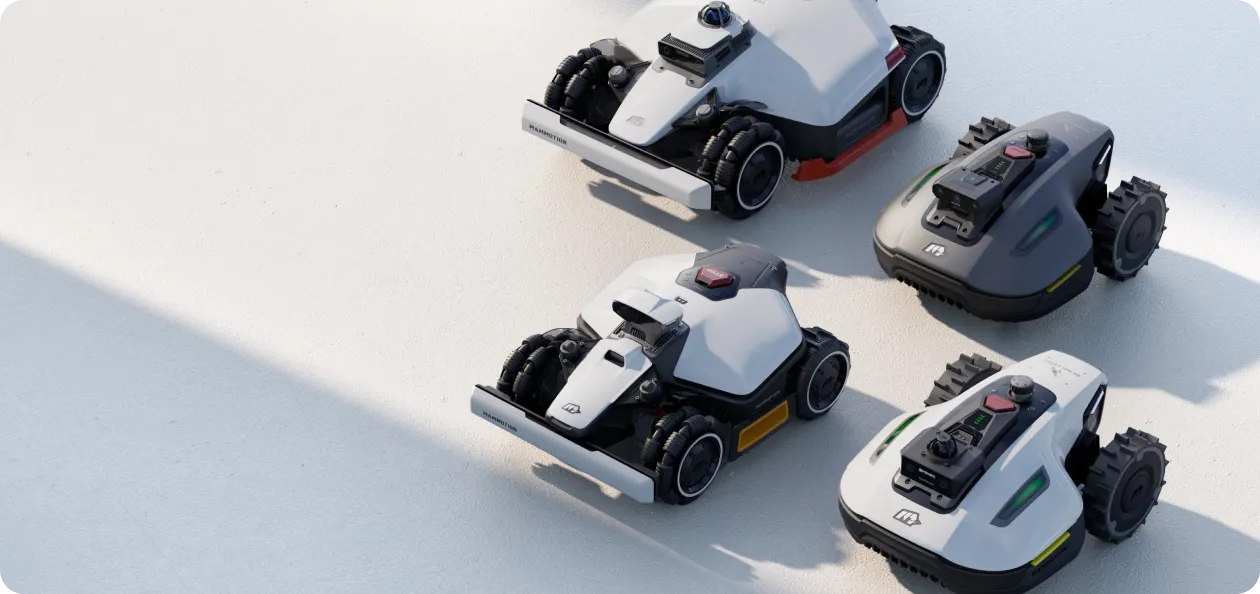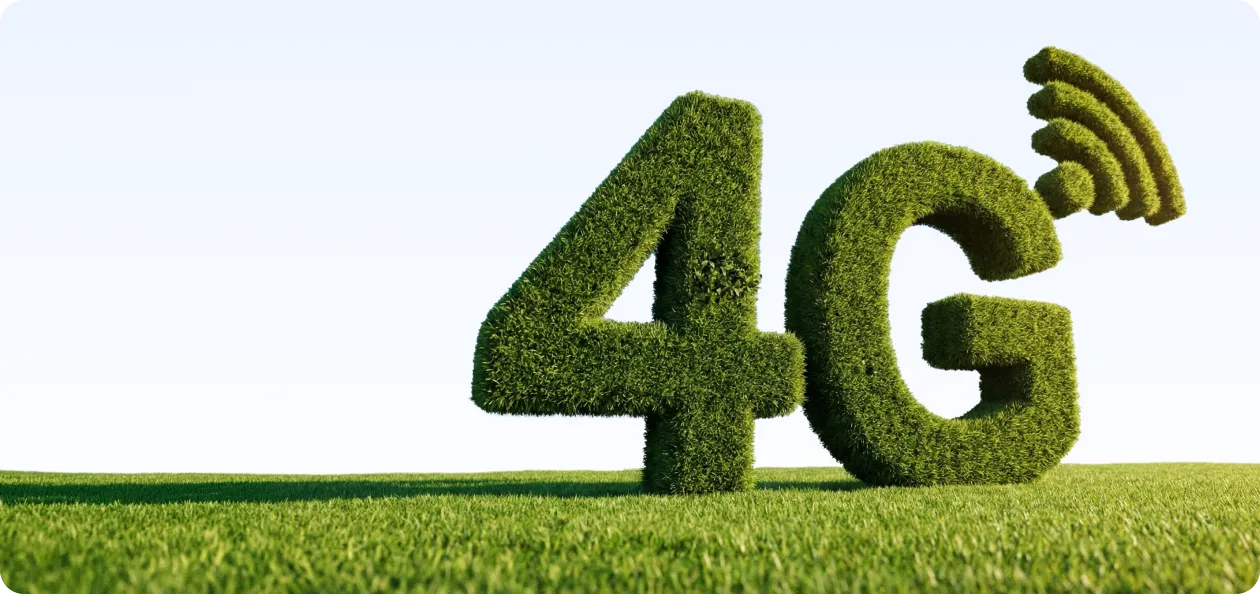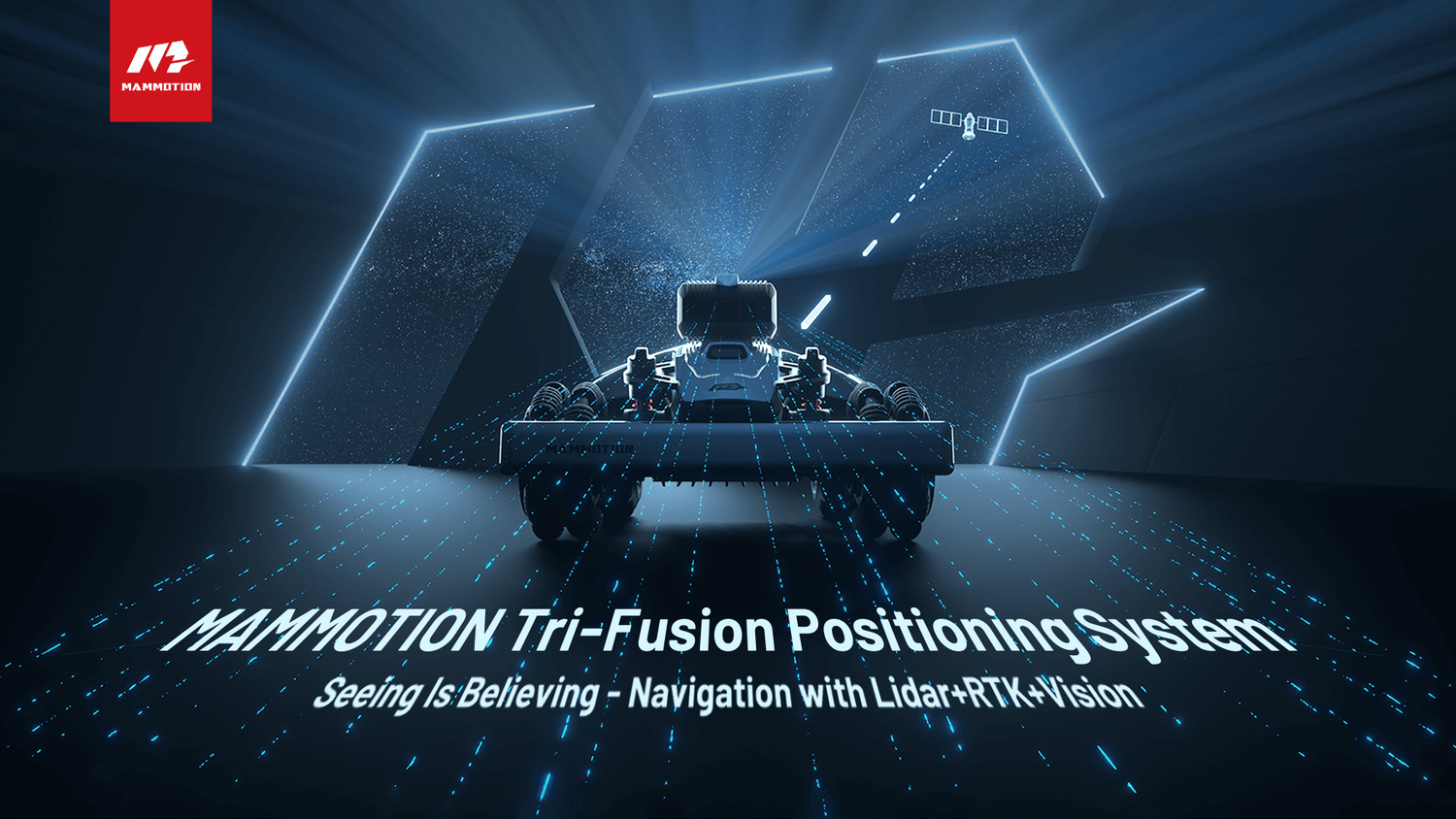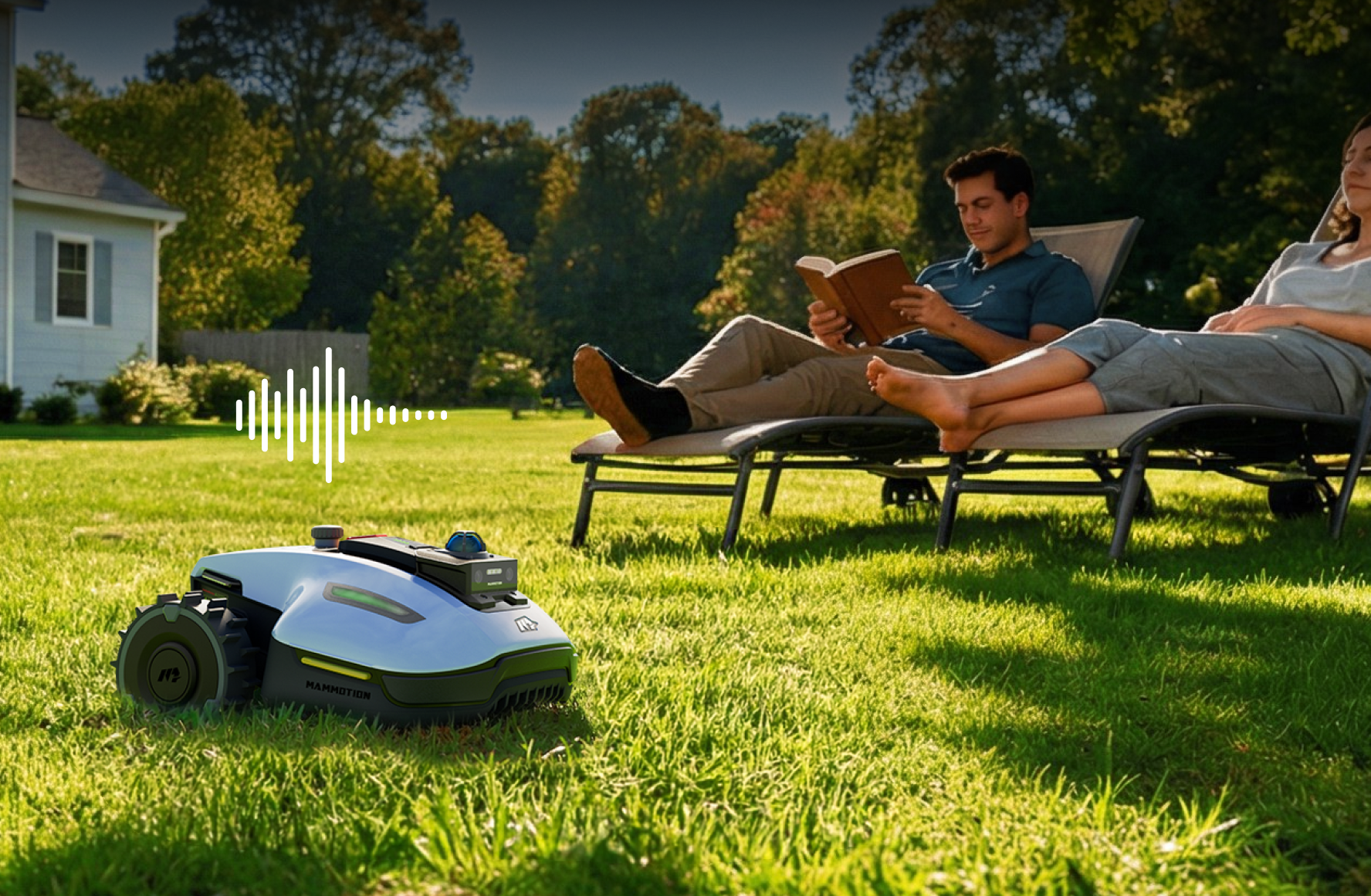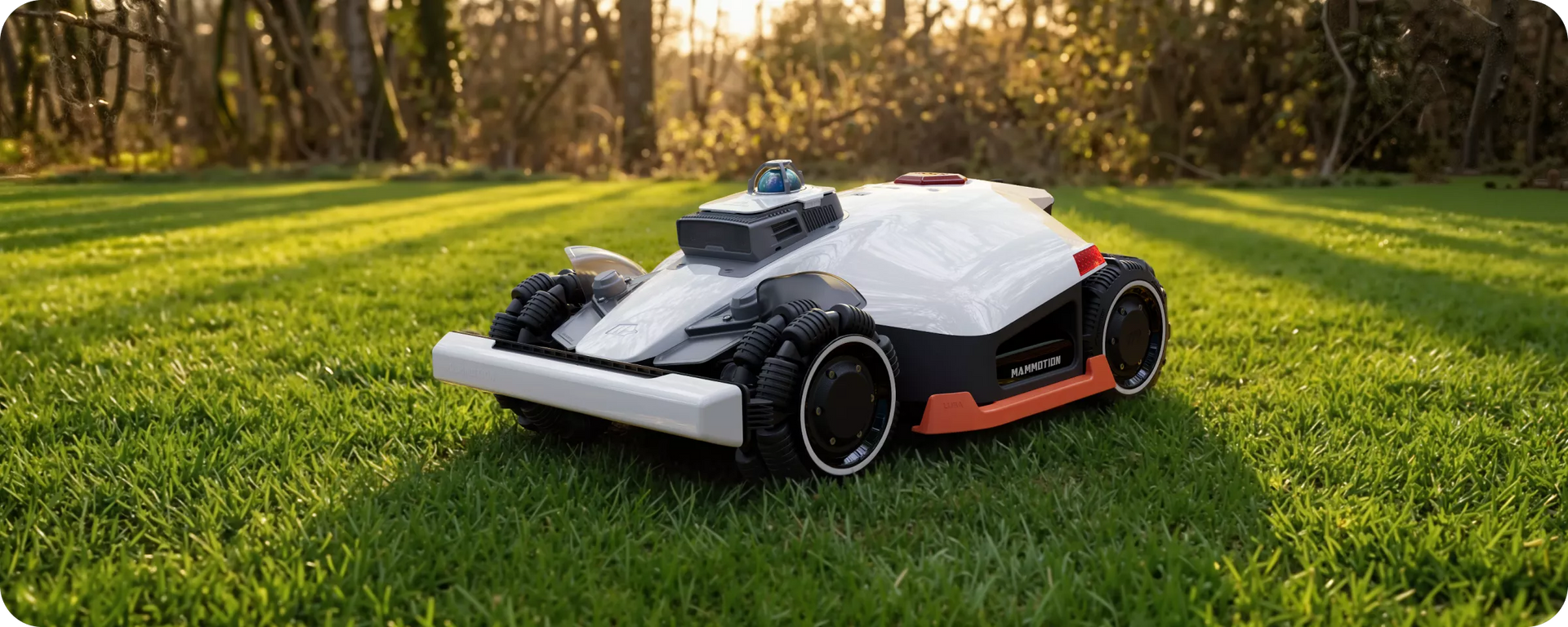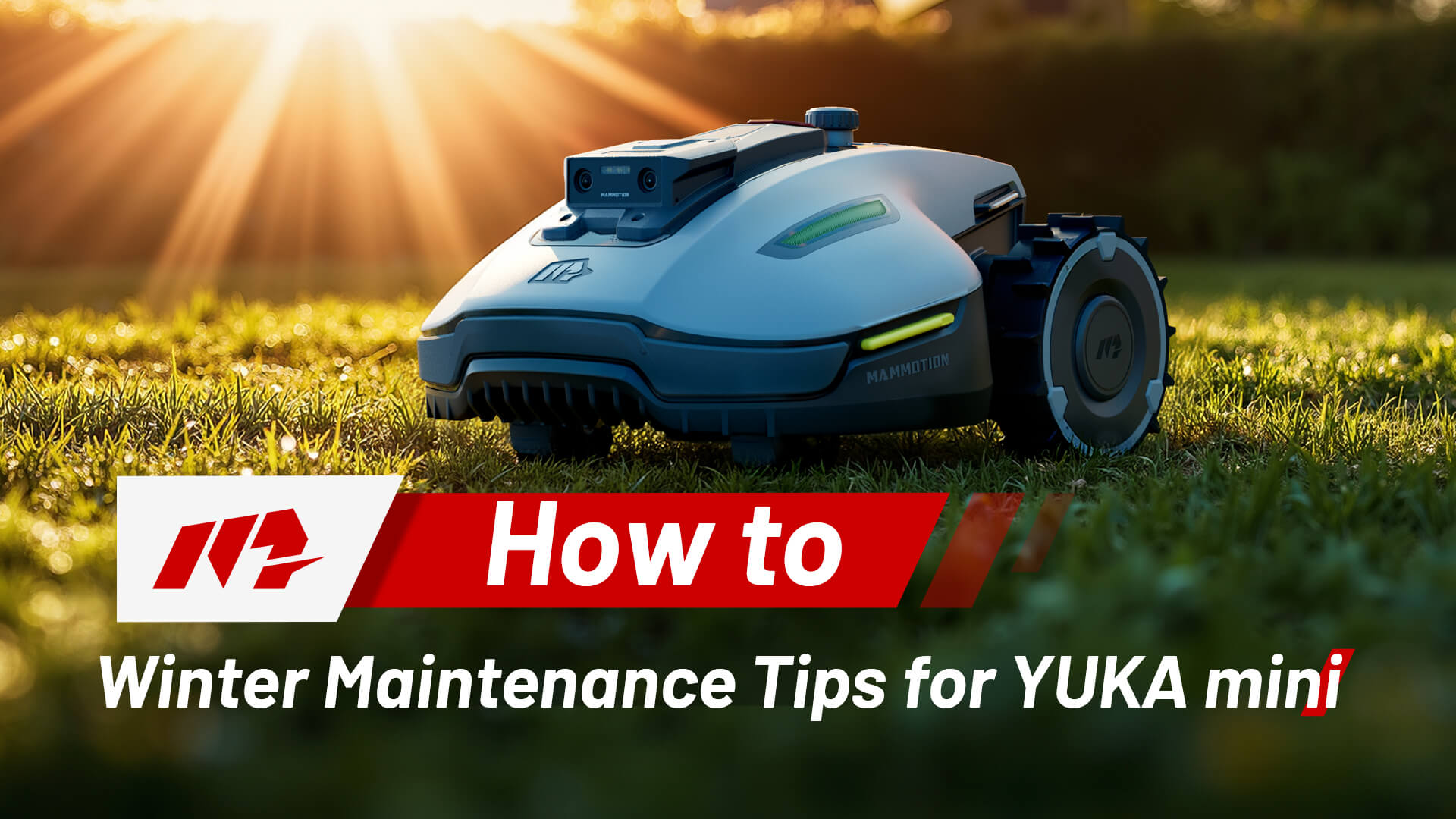Over the past 20 years, robotic lawn mowers have evolved from basic boundary-wire systems into advanced dual-sensor navigation. Yet even the most sophisticated mowers still struggle with one key challenge: adaptability across all lawn types and terrains. Traditional solutions work well only in certain conditions—dense tree cover, open grasslands, or shaded yards—but fail when moved outside their comfort zone.
This is where Mammotion Atlas Lab takes the lead. With the world’s first Tri-Fusion Positioning System published in 2025, Mammotion eliminates these trade-offs, enabling a robotic lawn mower to adapt dynamically to any yard—from small suburban lawns to vast farmlands—while maintaining centimeter-level accuracy. This isn’t just a product upgrade; it’s the beginning of Lawn Care 3.0, a new era of truly autonomous mowing.
Positioning Technology 1.0 – The Wire Era
The first generation of robotic lawn mowers relied on boundary wires to define mowing areas, a system that worked but came with major limitations in setup and adaptability.
When these mowers entered the market in the late 1990s and early 2000s, they represented an exciting step forward in home automation, with wire-based designs pioneered by brands such as Husqvarna and Bosch. A wire had to be physically buried or pegged around the perimeter of the lawn, creating a virtual fence that the mower would detect with onboard sensors. Once inside this boundary, the mower could operate autonomously.
Strengths of Wire-Based Systems
Reliable for simple lawns: Once installed, the mower consistently stayed within the defined area.
- Early automation: For the first time, homeowners could experience “hands-off” mowing.
- Cost-effective entry point: Wire-based systems made robotic mowing accessible at scale.
Limitations of Wire-Based Systems
Installation burden: Setting up the wire required hours of labor and occasional maintenance if the wire broke or shifted.
- Lack of adaptability: Any change to the lawn’s layout (new flowerbeds, trees, or patios) required re-installation of the wire.
- Inefficient mowing patterns: Early models typically used random navigation, which wasted time and energy.
In short, Positioning 1.0 was functional but rigid. It introduced the world to robotic mowing, yet it didn’t deliver the flexibility homeowners wanted as yards grew more complex and expectations for smarter technology increased. This limitation set the stage for the industry’s next leap forward: Dual-Sensor Fusion.
Positioning Technology 2.0 – Dual-Sensor Fusion
The second generation of robotic lawn mower positioning replaced boundary wires with dual-sensor fusion systems, typically RTK + Vision or LiDAR + Vision, offering smarter navigation but still struggling with specific environments.
By the early 2010s, as consumer demand grew for more convenience and less manual setup, manufacturers began integrating dual-sensor systems—RTK + Vision or LiDAR + Vision—allowing wire-free navigation and centimeter-level accuracy in optimal conditions:
RTK + Vision: Real-Time Kinematic (RTK) satellite positioning delivered centimeter-level accuracy in large, open lawns, while the vision system helped the mower recognize obstacles and boundaries.
LiDAR + Vision: Light Detection and Ranging (LiDAR) created 3D maps of the environment, while the vision system supported obstacle recognition and navigation in more cluttered, mid-sized lawns.
Recommended Applications for Dual-Sensor Fusion
LiDAR + Vision: Best suited for lawns up to 1,500㎡, especially in shaded areas or yards with trees, flowerbeds, and other obstructions. This configuration provides high stability and precise mapping, allowing the mower to navigate efficiently in complex, mid-sized environments.
RTK + Vision: Ideal for larger lawns over 1,500㎡, such as open residential estates or small grasslands. In these environments, RTK can achieve centimeter-level accuracy, making it highly effective for vast, unobstructed areas.
In short, Positioning technology 2.0 represents a significant advancement, eliminating wires and greatly improving navigation intelligence. Today, dual-sensor systems meet the needs of the vast majority of homeowners and landscapers, delivering reliable performance in typical residential and mid-sized lawns.
Yet the question remains: is there a truly one-size-fits-all solution that adapts seamlessly to any terrain, from shaded gardens to vast open fields? This challenge inspired Mammotion Atlas Lab to develop the world’s first Tri-Fusion Positioning System, setting the stage for the next generation of fully universal, all-terrain robotic mowing.
Positioning Technology 3.0 – Mammotion Tri-Fusion Positioning System
The third generation of robotic lawn mower positioning is defined by Mammotion’s Tri-Fusion Positioning System, the world’s first to integrate LiDAR, RTK, and Vision into one unified solution—delivering unmatched stability, ±1 cm precision, and adaptability across all lawn sizes and terrains.
Developed independently by Mammotion Atlas Lab, this breakthrough represents not just an incremental upgrade, but a complete rethinking of what autonomous lawn care can achieve. By fusing three complementary technologies, Tri-Fusion dynamically adapts to conditions where dual-sensor systems typically fail, ensuring seamless mowing performance in every environment.
Positioning Technology 3.0 – Mammotion Tri-Fusion Positioning System
The third generation of robotic lawn mower positioning is defined by Mammotion’s Tri-Fusion Positioning System, the world’s first to integrate LiDAR, RTK, and Vision into one unified solution—delivering unmatched stability, ±1 cm precision, and adaptability across all lawn sizes and terrains.
Developed independently by Mammotion Atlas Lab, this breakthrough represents not just an incremental upgrade, but a complete rethinking of what autonomous lawn care can achieve. By fusing three complementary technologies, Tri-Fusion dynamically adapts to conditions where dual-sensor systems typically fail, ensuring seamless mowing performance in every environment.

How Tri-Fusion Works Across Different Scenarios
Standard Lawns (≤ 1,500㎡):
In these environments, LiDAR + Vision handles the primary mapping, delivering fast, accurate 3D mapping in just a few minutes—no wires or base stations required. In obstructed areas with trees, flowerbeds, or patios, LiDAR dominates the mapping process, ensuring high stability and precise navigation.
Open or Sparse Areas:
When a lawn has few visual reference points, very open spaces, or reflective surfaces, LiDAR may not provide optimal feedback. In these cases, RTK assists in positioning, improving overall accuracy and ensuring seamless mowing performance.
Universal Adaptability:
Mammotion’s Tri-Fusion system intelligently switches between LiDAR, RTK, and Vision in real time, dynamically adapting to the environment. Even in mixed scenarios—partially obstructed areas, open spaces, or shaded lawns—the system maintains precision and stability, offering an all-terrain solution.
Why Tri-Fusion Marks the Biggest Leap in Decades?
By addressing the weaknesses of both RTK and LiDAR, Mammotion has created a system that offers true universality. Homeowners no longer need to worry whether their yard is “too shaded” or “too open” for a robotic mower to work. Landscapers and large property managers gain a tool that’s equally effective on small gardens or vast estates.
In short, Tri-Fusion Positioning System isn’t just the next step—it’s the breakthrough that transforms robotic mowing into a seamless, worry-free experience.
Comparison of Positioning Technology: 1.0 → 2.0 → 3.0
|
Generation |
Core Technology |
Strengths |
Limitations |
Best Use Case |
|
1.0 – Wire |
Boundary wires |
Simple, reliable in defined areas |
Labor-intensive setup, poor adaptability, random mowing patterns |
Small, simple lawns with static layouts |
|
2.0 – Dual-Sensor Fusion (RTK + Vision / LiDAR + Vision) |
Combines two sensors |
Wire-free convenience, systematic mowing, obstacle recognition |
RTK fails under trees/urban areas; LiDAR weak in open or reflective terrains |
Medium to large lawns, but environment-dependent |
|
3.0 – Mammotion Tri-Fusion (LiDAR + RTK + Vision) |
Three integrated sensors |
±1 cm precision, works in all terrains, fast 3D mapping, obstacle avoidance, installation-free, 3× durability |
First-generation global rollout (new tech) |
Universal: from small residential lawns to vast farmlands |
How Mammotion Tri-Fusion Positioning System Changes Our Lives
Mammotion’s Tri-Fusion Positioning System transforms robotic mowing from a helpful tool into a seamless, life-changing experience, saving time for homeowners, improving productivity for professionals, and advancing sustainable lawn care.
1. For Homeowners: Stress-Free Lawn Care
- Zero setup time: No wires, no base stations—just unbox and mow.
- Reliable in every yard: Works equally well in shaded suburban gardens, hilly terrains, or open grasslands.
- Peace of mind: With centimeter-level precision and smart obstacle detection, families can trust the mower around kids, pets, and outdoor furniture.
- Time saved: According to a 2022 Statista survey, the average American spends over 70 hours per year on lawn maintenance, highlighting the potential time savings offered by fully autonomous systems like Tri-Fusion.
2. For Landscaping Professionals & Large Properties
- Universal adaptability: One solution for small residential lawns, large estates, parks, or sports fields.
- Operational efficiency: Reliable performance means less supervision and fewer manual corrections.
- Scalable technology: Professionals can manage multiple sites with confidence, knowing Tri-Fusion adapts to each environment automatically.
3. For the Environment
- Optimized mowing patterns: Systematic coverage reduces redundant mowing passes, cutting down energy consumption.
- Less chemical dependence: Consistent mowing promotes healthier turf, potentially reducing the need for fertilizers and pesticides.
- Quiet and electric: Low noise and zero direct emissions support greener, more sustainable communities. Studies indicate that robotic mowers can cut carbon emissions by up to 50% compared to gas-powered mowers.
4. For Our Lifestyle
With Tri-Fusion, robotic lawn mowers shift from “machines that help” to true autonomous partners. Instead of managing the mower—worrying about boundaries, signal interference, or terrain compatibility—users simply delegate the task and trust the system. This represents a new standard in outdoor robotics, where technology adapts to human needs instead of the other way around.
In short, Tri-Fusion changes lawn care from a chore into an invisible service—always reliable, always precise, and always ready.
Mammotion Atlas Lab: Driving the Robotic Mower Industry Forward
The world’s first Tri-Fusion Positioning System did not come from incremental upgrades—it came from Mammotion Atlas Lab, a dedicated research center committed to redefining the boundaries of outdoor robotics.
Unlike many industry players who adapt existing technologies, Mammotion built Tri-Fusion from the ground up, independently developing the algorithms and hardware needed to integrate LiDAR, RTK, and Vision into one seamless system. This innovation is now undergoing global real-world testing, ensuring it performs reliably across climates, terrains, and lawn sizes before reaching households worldwide.
Mammotion’s Role in the Industry:
- Pioneer in wire-free mowing: Moving the industry past the limitations of boundary-wire systems.
- Leader in sensor fusion: Pushing beyond dual-sensor solutions with the first Tri-Sensor fusion system.
- Innovation-first strategy: Investing heavily in R&D instead of relying on legacy designs.
Mammotion Atlas Lab’s Mission:
- Redefine adaptability: Eliminate the “one-size-fits-some” limitations of current systems.
- Deliver reliability: Build positioning technology that works in every environment, from shaded yards to open farmland.
- Drive sustainability: Support smarter, greener lawn care through efficient autonomous navigation.
Shaping the Future of Garden Robotics:
By overcoming the long-standing barriers of robotic mowing—installation complexity, environmental limitations, and inconsistent precision—Mammotion is setting the pace for the entire industry. The Tri-Fusion system is not just an internal success; it represents a new standard that competitors will need to follow.
Conclusion: The Dawn of Robic Lawn Care 3.0
From boundary wires to dual-sensor fusion and now to Mammotion’s Tri-Fusion Positioning System, robotic lawn mowers have evolved dramatically over the past two decades. Each step solved the challenges of the previous generation, but only Mammotion’s Tri-Fusion delivers universal adaptability, ultra-precise navigation, and installation-free convenience.
This breakthrough transforms lawn care from a labor-intensive chore into a fully autonomous, reliable, and sustainable service, giving homeowners more time, landscapers more efficiency, and communities a greener footprint.
Mammotion Atlas Lab’s leadership ensures that these innovations are tested, practical, and ready for real-world use, pushing the industry forward and redefining expectations for autonomous garden robotics.
Take the Next Step with Mammotion
Experience the future of lawn care today: explore Mammotion’s Tri-Fusion-powered robotic mowers and see how effortless, precise, and intelligent lawn maintenance can be.
Discover Mammotion Tri-Fusion Robotic Mowers →










